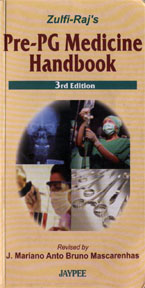048. The comparison of the amino acid sequence of Cytochrome C from different species shows many variations. Most of these variations are found:
1. Randomly
2. Only in helical regions
3. Only in strand regions
4. Mainly in loop regions
Answer
??
Reference:
Dayhoff Atlas of Protein Structure and Function Matrix
Bioinformatics for Beginners, Mani and Vijayaraj, 1st Edition Page 165
“Creative Evolution?!” by John H Campbell Page 10
Quality
Reader
Status
Repeat, but different stems
QTDF
No Idea
Discussion
After waddling through intricacies of cytochrome structure and finding nothing of much use in Harper, Lippincott, Chaterjee or Vasudevan, I was forced to take a sojourn to the myriad world of cyberspace and grasped the following point.
Explanation
Proteins are made up of sequences of amino acids. Amino acids are like letters, and proteins are like words. Just as there are 26 different letters in the modern English alphabet, there are about 20 different amino acids. A protein is constructed from a sequence of its amino acids, just like a word is constructed from a sequence of letters. There are a lot more amino acids in a protein than there are letters in a word, however.
Cytochrome C is about one hundred amino acids long. Imagine a word that is one hundred letters long. You could change one or two of the letters to a similar letter (you could replace a C with a K, for instance) and it would not change the pronunciation of the word noticeably. In the same way, you could change a few of the amino acids in cytochrome C with similar amino acids without affecting the function of the protein very much.
It happens that the cytochrome C in humans is slightly different from the cytochrome C in bacteria, but it still functions the same way. As a matter of fact, there are slight differences in the amino acid sequences of cytochrome C in most living creatures.
Cytochrome C in bacteria is 64% different from horses and pigeons, 65% different from tuna and silkmoths, 66% different from wheat, and 69% different from yeast
Comments
Till we see a exact word in a UG text (like that for Ubiquitin where it is clearly given), we are not sure of the answer
Tips
In AIPG 2004,we had the following question
Cytochrome C of the bacteria has 50% identity of amino acid sequence with that of human. Which of the following is the most conserved parameter in these two proteins?
1. Quaternary structure.
2. Tertiary structure.
3. Amino acid sequence.
4. Loop and turn segments.











No comments:
Post a Comment